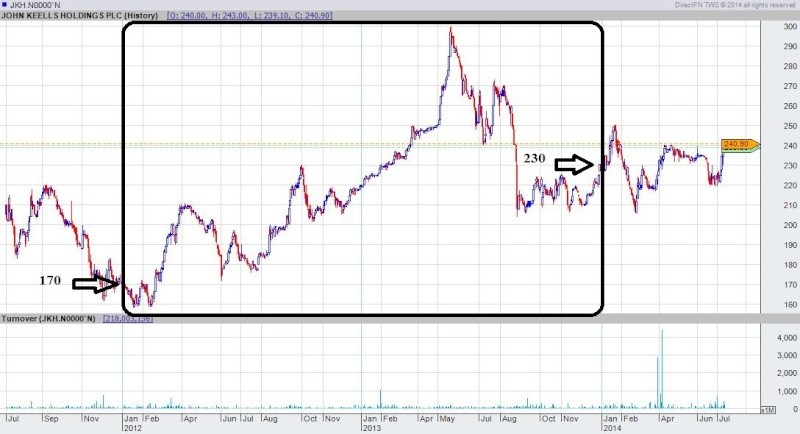How to outperform the market – Can We
Post on: 16 Март, 2015 No Comment

How to outperform the market – Can We?
by hunter on Sun Jul 13, 2014 8:10 pm
When the markets go up, most of the investors make profits; when the markets go down most of them make losses. It’s no brainer. But how good or bad are we compared to the market, is a good way to decide how effective our investment/trading strategy is. ‘Can we beat the market?’ is a question asked by many investors time to time.
Following is a gathering of some thoughts on, at least theoretically, to find if it is possible to outperform the market consistently with considerable margins.
For illustration purposes, I selected the period form 01 Jan 2012 to 31 Dec 2013. For market index, ASI was selected. Two popular counters with high liquidity were selected as a market sample for investment/trading performance calculations; JKH and SAMP.
I chose 4 methods of investment for performance comparison, namely;
1. Passive investment – buy at the beginning of the period and sell at the end
2. Bargain hunting- buy at the bottom and keep until the end
3. Active trading – swing trading buy buying at the bottom and sell at the top
4. Panic trading- inverse of active trading; buying at the top and selling at the bottom
Following diagram shows how ASI moved during the selected period.
At the beginning, ASI has been around 6000, and after some fluctuations, at the end, it has returned to the same level. Therefore, there has not been any overall net market movement; hence, market gain is 0%.
Now, let’s see if JKH and SAMP would have helped to outperform the market.
First, let’s look at how the two shares behaved during the said period.
Here is how JKH has moved.
Here is how SAMP has moved,
—-
Now, let’s calculate results given by each strategy.

1. Passive investor: A passive investor would buy at the beginning and sell at the end. This would give the following results.
- —-
2. Bargain Hunter: A bargain hunter would wait for the lowest price to buy the shares and keep until the end to sell. The results would be as follows.
3. Swing trader: An active swing trader would look for bottoms and peaks for buying and selling respectively. The results would be similar to the following.
4. Panic Trader: Finally, those who are driven by emotions related to greed and fear would buy at the peaks and sell at the bottoms. The results would not deviate much from the below.














